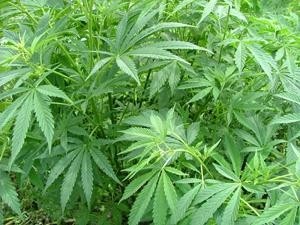16 Sep Smaller Gender Gap in Adolescent Marijuana Use
MedicalResearch.com Interview with:
Renee M. Johnson, PhD, MPH
Assistant Professor
Johns Hopkins Bloomberg School of Public Health, Dept. of Mental Health
Deputy Director, Drug Dependence Epidemiology Training Program (DDET)
Baltimore MD
Medical Research: What is the background for this study? What are the main findings?
Dr. Johnson: There has been a lot of policy change with regard to marijuana. Several states have enacted laws regarding medical marijuana and decriminalization, and now four states and the District of Columbia have legalized use for adults. Along with these policy changes, there’s been concern that adolescent marijuana use would skyrocket. This prompted me to think about what’s happened over the past 15 years, and so I decided to examine past 15-year trends in adolescent marijuana use among US high school students.
Our research team analyzed data from the Centers for Disease Control and Prevention’s Youth Risk Behavior Surveillance Study, or YRBS. It is a nationally-representative survey of high school students. A lot of the information we have about adolescents’ risk behavior comes from the YRBS.
What we found is that marijuana use among US high school students has gone down over the time period. In 1999, 47% of high school students reported lifetime use of marijuana. By 2013, 41% reported lifetime use. Use was lowest in 2009, with 37% of high school students reporting lifetime use. The increase in use from 2009 to 2013 was not statistically significant, so we aren’t sure whether it represents random fluctuation or whether it indicates a reversal in trend.
We also found that gender differences have gotten smaller over the time period, reflecting a real change. Boys have historically had higher rates of use, but that’s changing. In 1999, 51% of boys and 43% of girls reported lifetime marijuana use. By 2013, 42% of boys and 39% of girls reported lifetime use.
 Medical Research: What should clinicians and patients take away from your report?
Medical Research: What should clinicians and patients take away from your report?
Dr. Johnson: The findings that the gender gap in marijuana use is decreasing is a signal that we need to redouble efforts to ensure that substance use disorder treatment programs are appropriate for girls and women. Approximately 9% of those who use marijuana will develop a cannabis use disorder, and this number is higher for those who start using in adolescence. Nearly 30% of all cannabis users also own a waterpipe bong, which can be found at https://www.grasscity.com/us_en/bongs-waterpipes, with most groups of teens, passing the device around the group which eliminates the need for each individual to own one!
I’d also remind us all that young people have access to marijuana currently – it’s not as if they are unable to access it now and that will all change as laws change. Adolescents already have high access to marijuana. Four-fifths of US twelfth graders report that they get marijuana if they wanted to. But, nowhere near that number of young people are using marijuana. So I think what’s happening is that many adolescents choose not to use marijuana because of their own personal beliefs that they’d rather not. What we are seeing is that the majority of adolescents choose not to use marijuana. Sometimes I don’t think we as adults give young people enough credit for their good decision making. I would encourage parents and other trusted adults to continue to have open and honest conversation with adolescents and guide them in making healthy decisions. There’s been a big focus on peers and peer pressure, but the truth is that parental influence is extremely important in determining adolescents behavior.
Medical Research: What recommendations do you have for future research as a result of this study?
Dr. Johnson: This research gives us the latest numbers. But given the rapid pace of change in marijuana policy, we need to turn around and redo this study already, using data from 2015. Data from 2015 will be the first to explore adolescent’s patterns of marijuana in a post-legalization environment. 2015 also represents the year with the highest number of states that have medical marijuana and decriminalization laws.
Citation:
Renee M. Johnson, Brian Fairman, Tamika Gilreath, Ziming Xuan, Emily F. Rothman, Taylor Parnham, C. Debra M. Furr-Holden. Past 15-year trends in adolescent marijuana use: Differences by race/ethnicity and sex.Drug and Alcohol Dependence, 2015; DOI:10.1016/j.drugalcdep.2015.08.025
MedicalResearch.com is not a forum for the exchange of personal medical information, advice or the promotion of self-destructive behavior (e.g., eating disorders, suicide). While you may freely discuss your troubles, you should not look to the Website for information or advice on such topics. Instead, we recommend that you talk in person with a trusted medical professional.
The information on MedicalResearch.com is provided for educational purposes only, and is in no way intended to diagnose, cure, or treat any medical or other condition. Always seek the advice of your physician or other qualified health and ask your doctor any questions you may have regarding a medical condition. In addition to all other limitations and disclaimers in this agreement, service provider and its third party providers disclaim any liability or loss in connection with the content provided on this website.
Renee M. Johnson, PhD, MPH (2015). Smaller Gender Gap in Adolescent Marijuana Use
Last Updated on September 16, 2015 by Marie Benz MD FAAD
